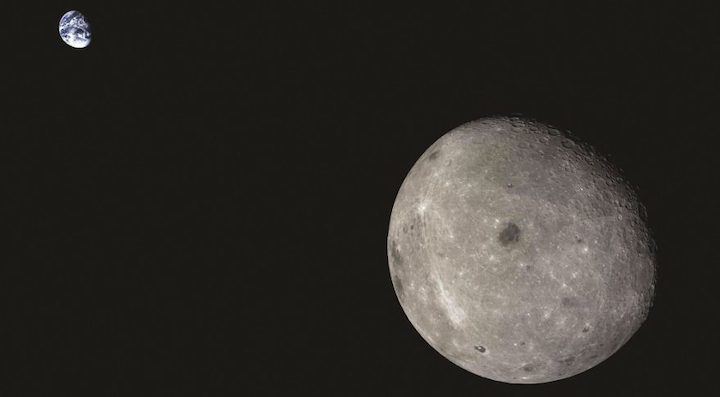15.04.2020

WASHINGTON — Under a U.S. Air Force small business innovation contract, a team of space startups is working on a concept to collect and analyze information about objects and activities in cislunar space near the moon.
“This is a Phase 1 study to investigate intelligence gathering as it pertains to the lunar domain,” Nathan Parrott, director of Saber Astronautics USA, told SpaceNews.
The study is led by Rhea Space Activity, a startup based in Washington, D.C., which partnered with Saber Astronautics, a company headquartered in Australia with U.S.-based operations in Colorado. They will propose using a three-dimensional space situational awareness portal to track objects and analyze data. The companies announced on April 6 they won a $50,000 Air Force study contract to develop a concept for collecting and managing lunar intelligence.
Data about objects in cislunar space analyzed by Rhea Space Activity will be displayed and analyzed in a “space cockpit,” a ground mission control tool being developed under a separate Air Force small business innovation contract awarded to Saber Astronautics in 2019.
“The space cockpit uses 3D graphics and gaming-like controls to give a more intuitive feel to the space domain,” said Parrott.
A commercial version of the space cockpit is used by satellite operators to monitor, fly, and diagnose problems in spacecraft.
The Air Force would be able to use the same system to integrate lunar intelligence, said Parrott.
“The cislunar domain is becoming more important for space domain awareness, particularly as the number of manned missions to the moon starts to increase,” he said. “Being able to ensure the safety of flight for these missions is of critical concern to NASA and others.” The government needs tools so that when missions are analyzed, they can be quickly visualized and reviewed, Parrott said.
According to the Air Force small business innovation program’s December 2019 solicitation: “As the space beyond geosynchronous orbit becomes more crowded and competitive, it is important for the Air Force to extend its space domain awareness responsibilities to include this new regime. To support this new body of work, the Air Force is seeking commercial innovation in support of space domain awareness for future cislunar operations.”
The companies will complete the cislunar space intelligence study in about three months and then submit a proposal for a Phase 2 contract to start developing the technology.
“The goal of any Phase 1 study is to hopefully progress it towards a Phase 2,” said Parrott. “That will depend upon the efficacy of the study and its potential to be commercialized among other factors.”
Cameo Lance, a physicist at Rhea Space Activity, said that development of a new lunar intelligence discipline is inevitable as the U.S. military seeks to expand its capabilities beyond geosynchronous orbit to compete with China.
“China’s Chang’e 4 mission successfully landed a probe on the far side of the moon, and China currently uses a communications satellite at the Earth-moon L2 point to relay communications to Earth,” she said.
The U.S. military’s interest in the lunar domain extends beyond the Air Force. The Pentagon’s Space Development Agency has long-term plans to develop surveillance satellites to keep an eye on cislunar space.
Parrott said the military is trying to prepare for a future of increased space activity and these studies will help provide some answers.
“As it stands, we don’t know what we don’t know,” he said. “So a large part of this project is to discover would be important from a strategic standpoint and make recommendations accordingly.”
Quelle: SN
